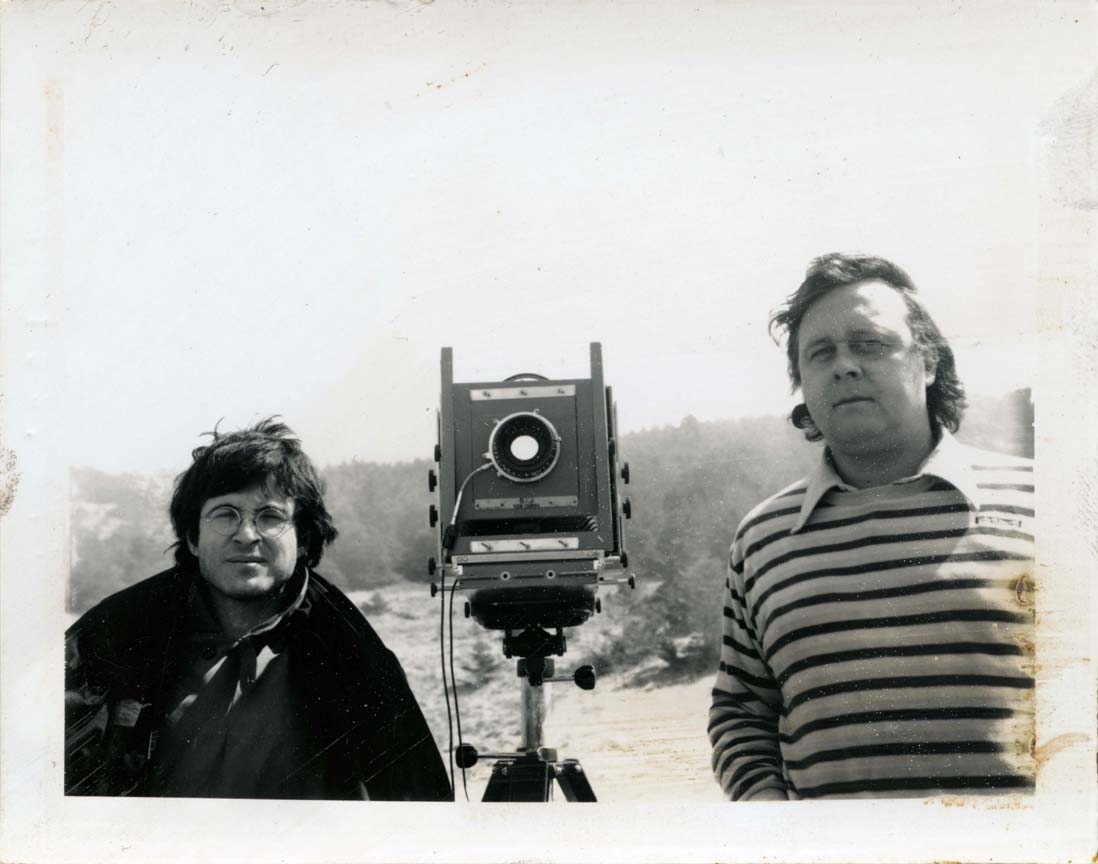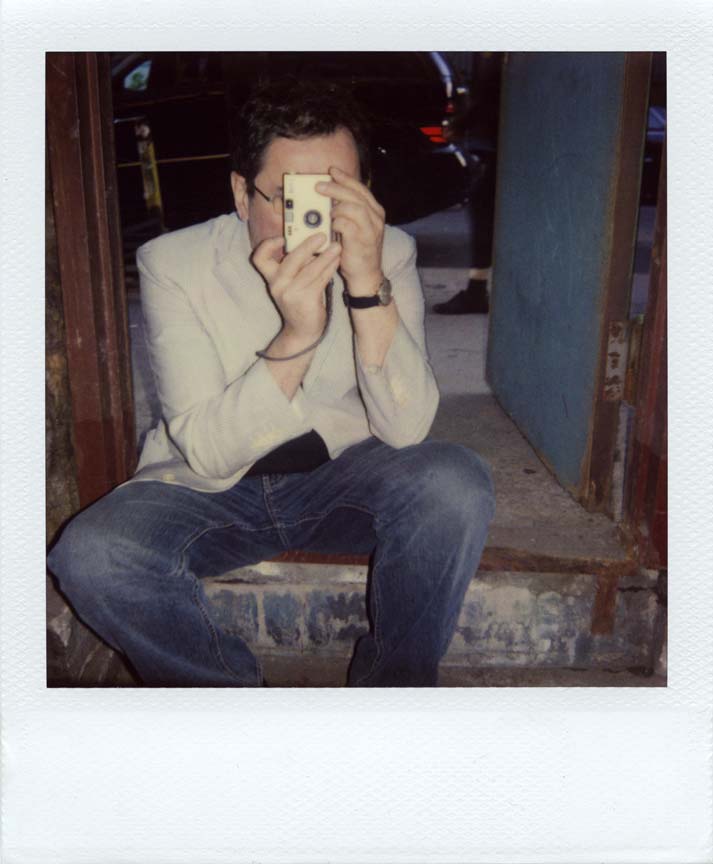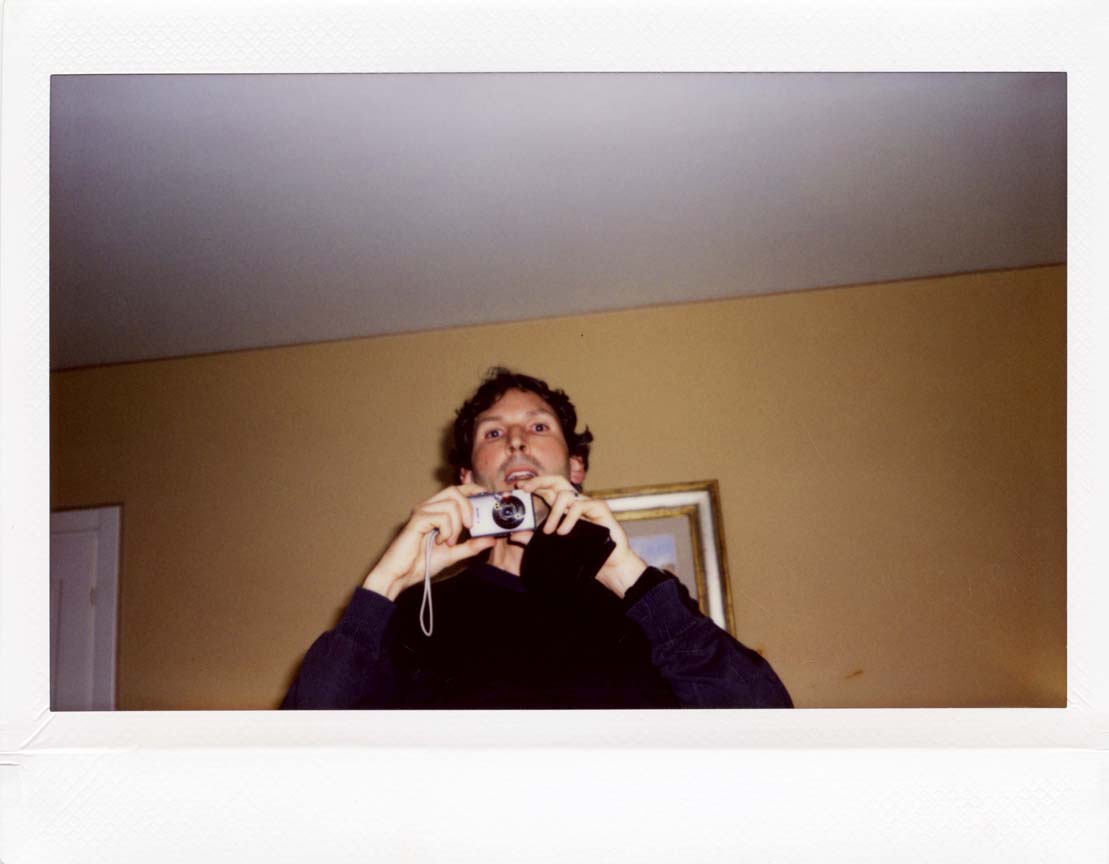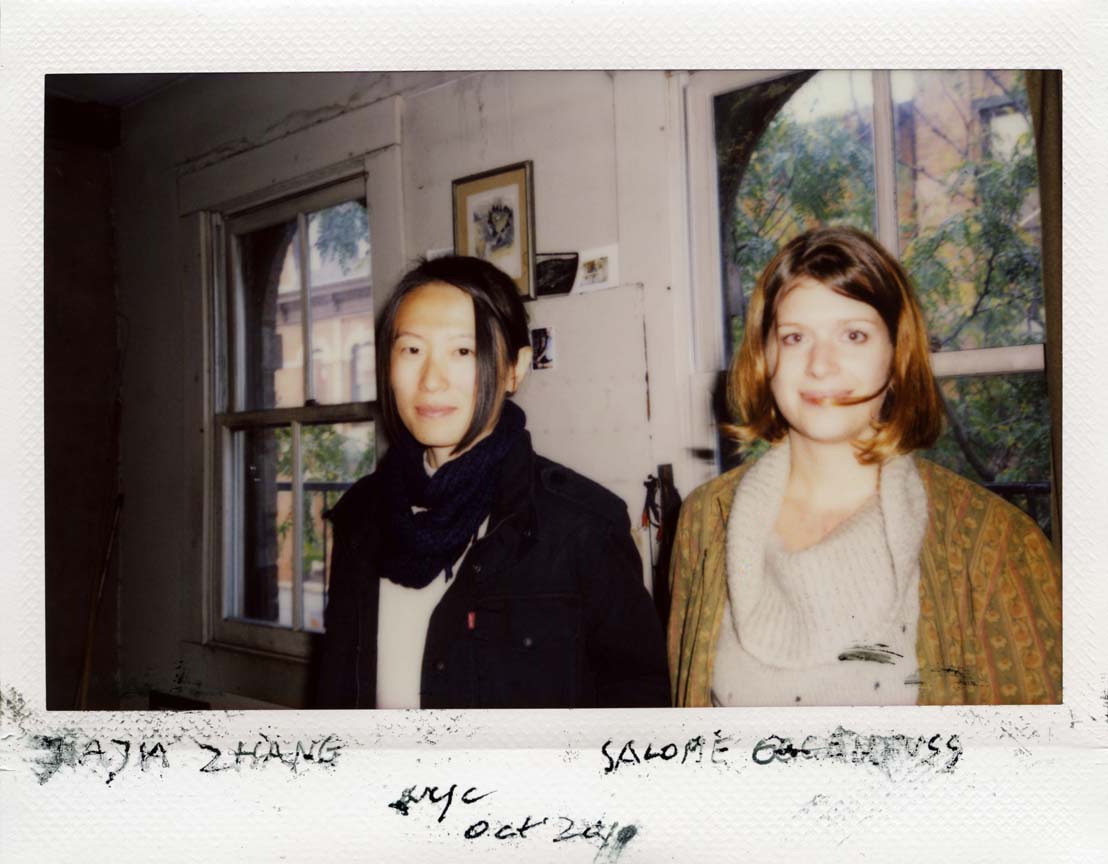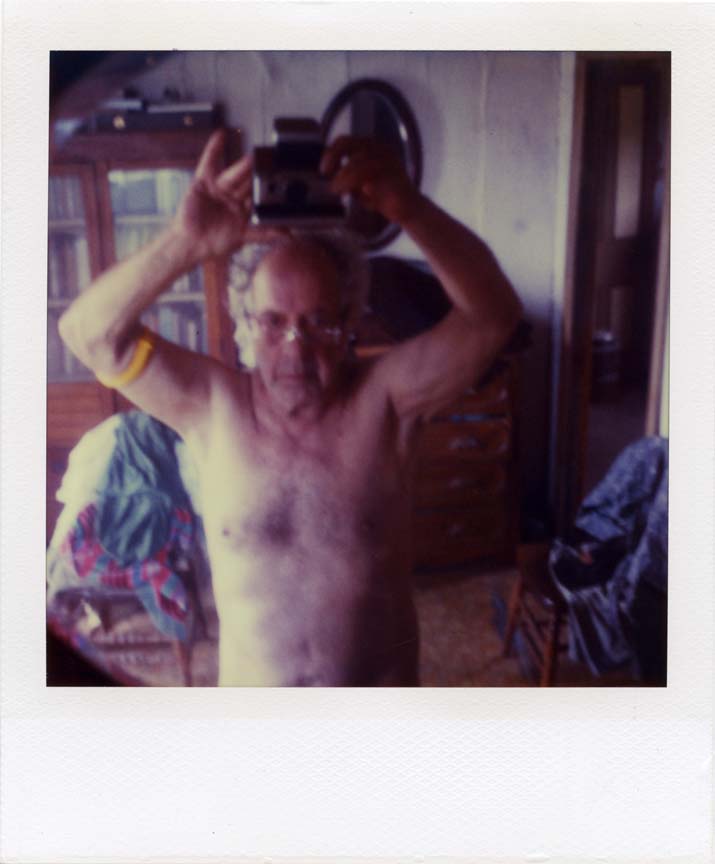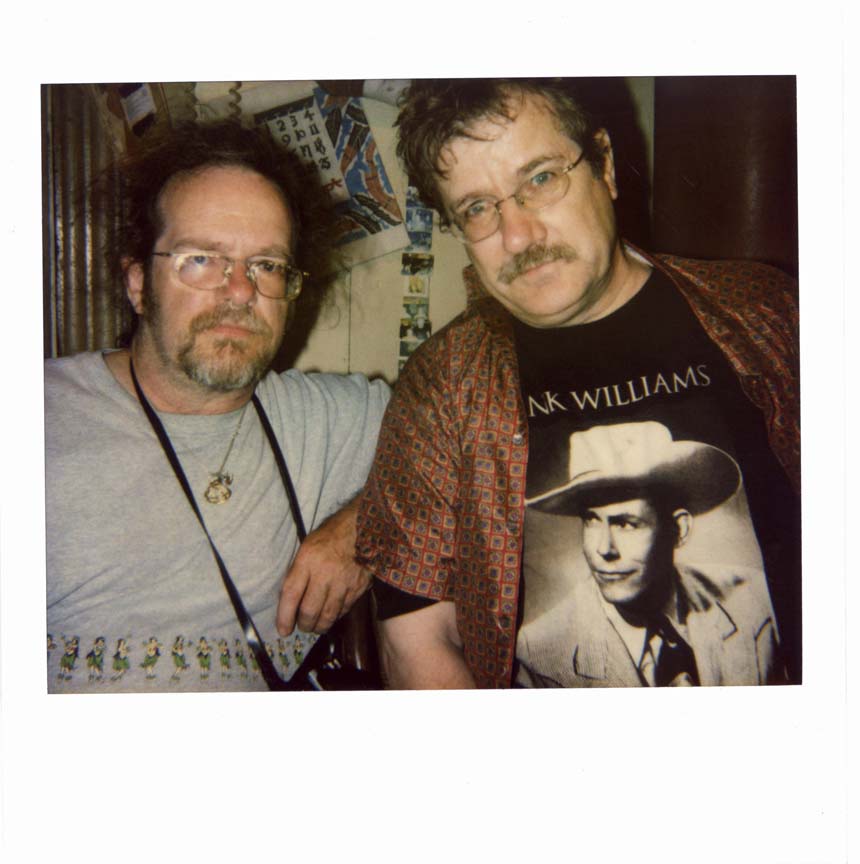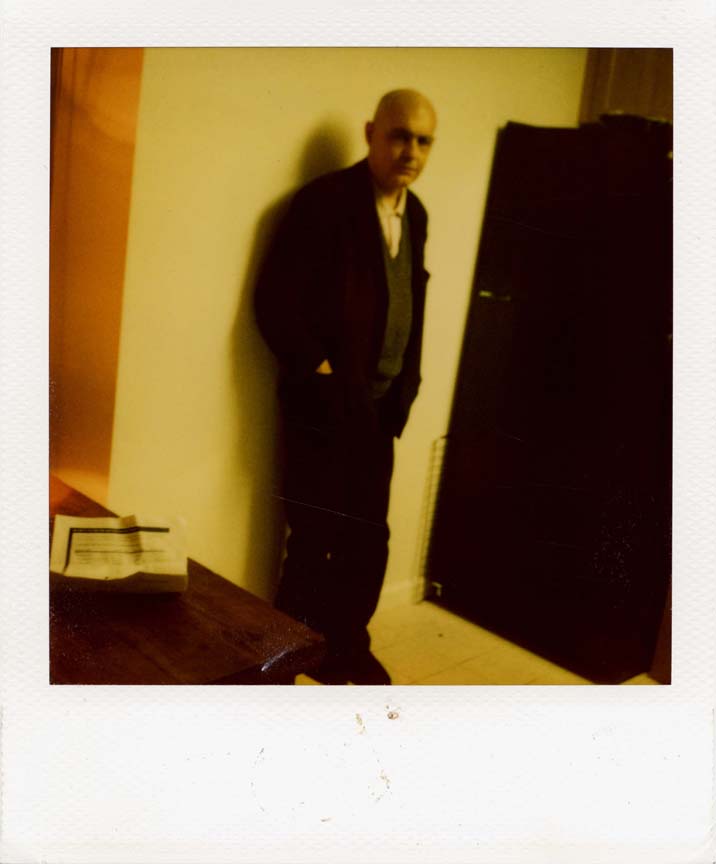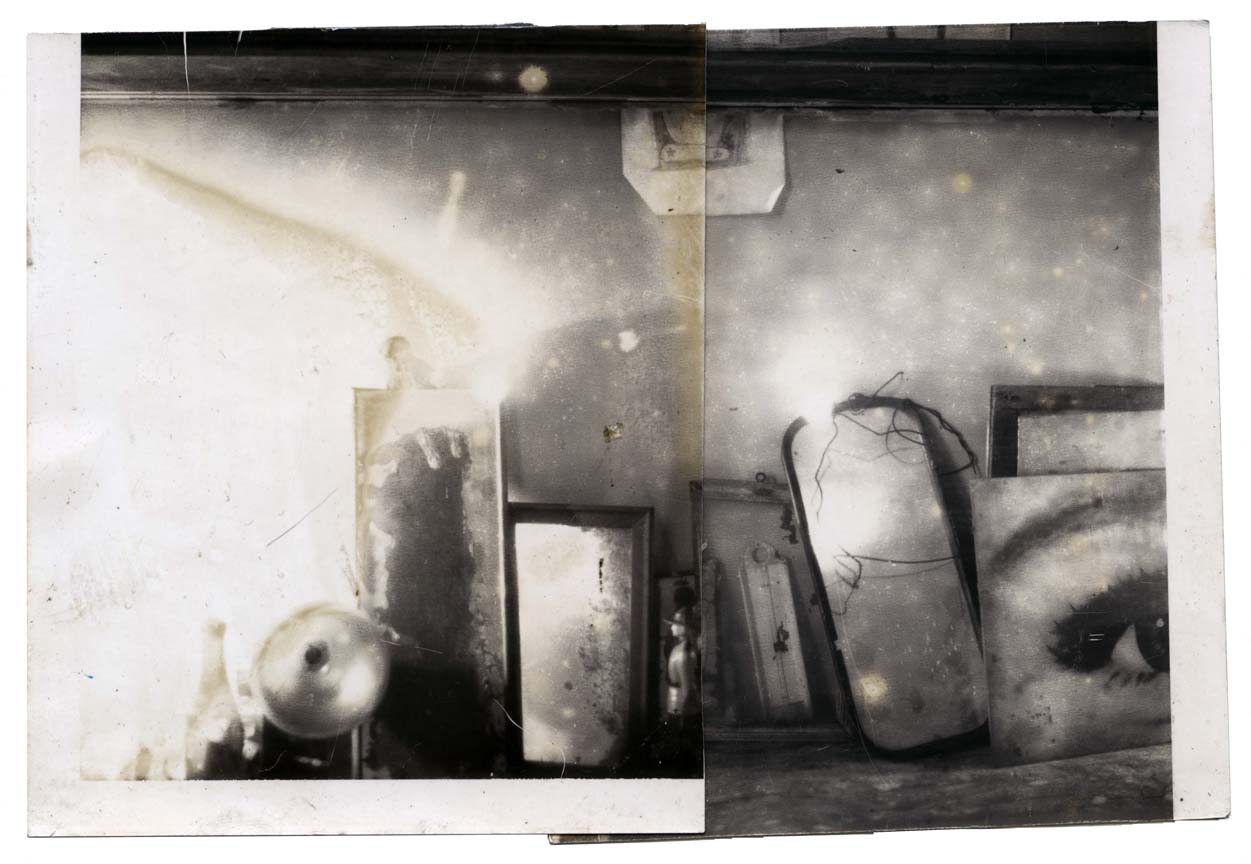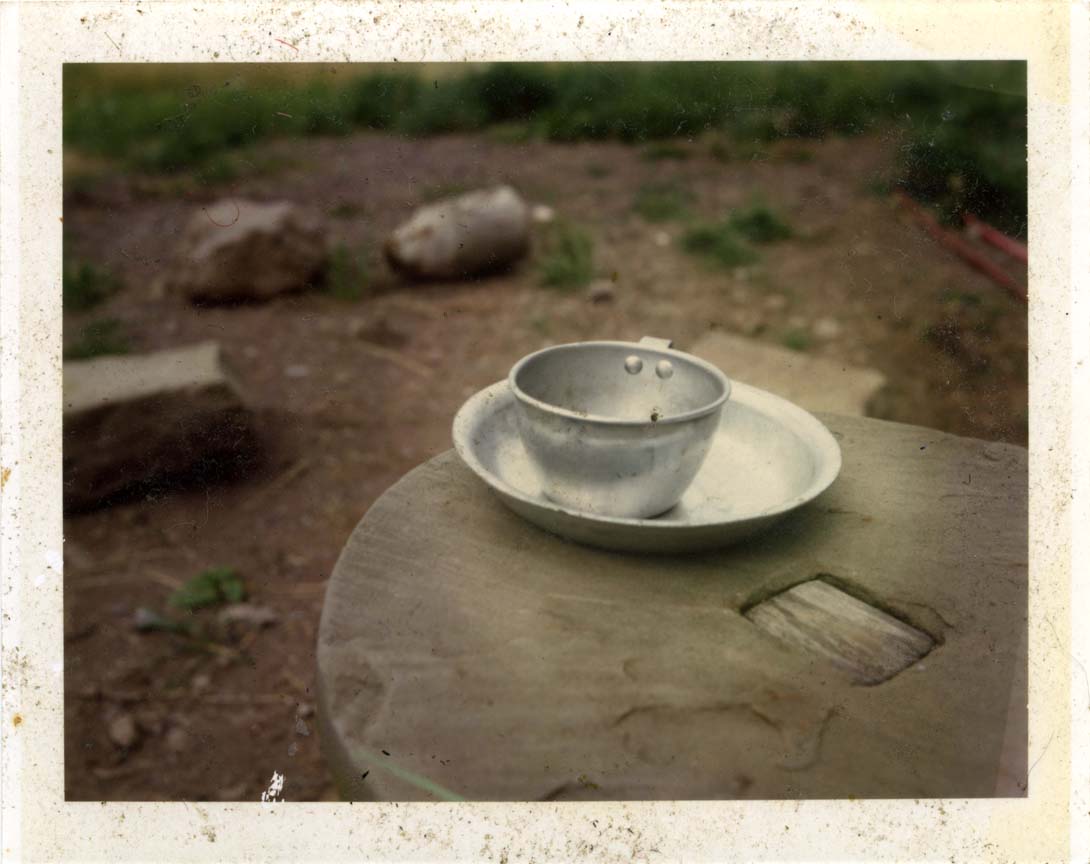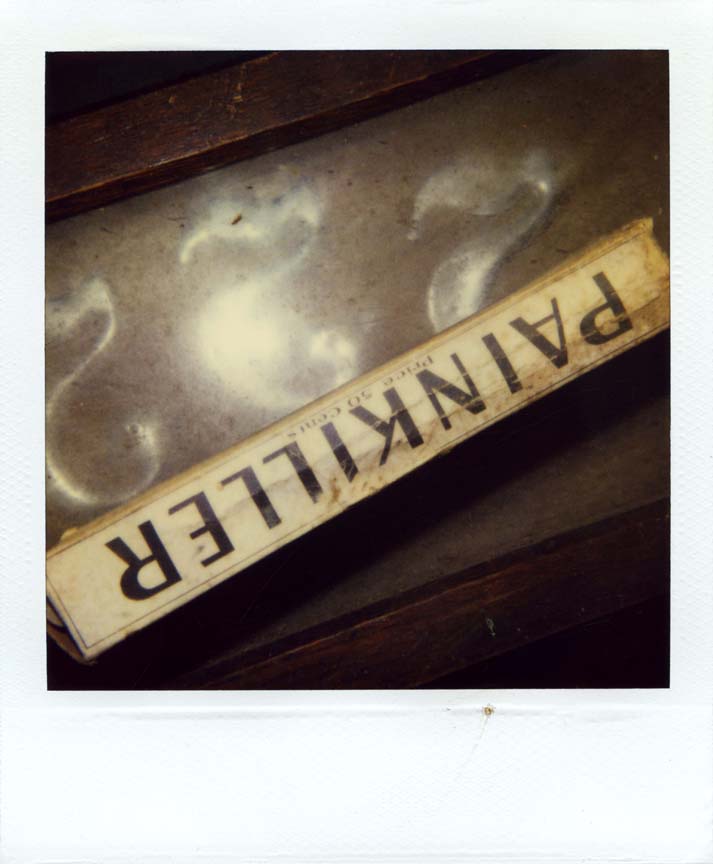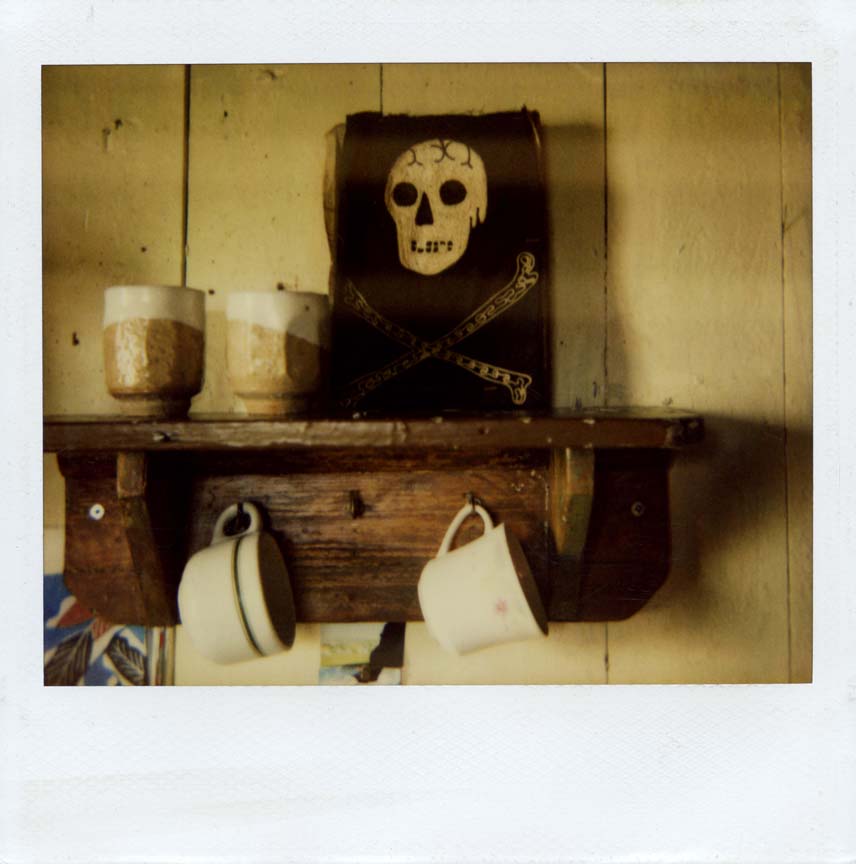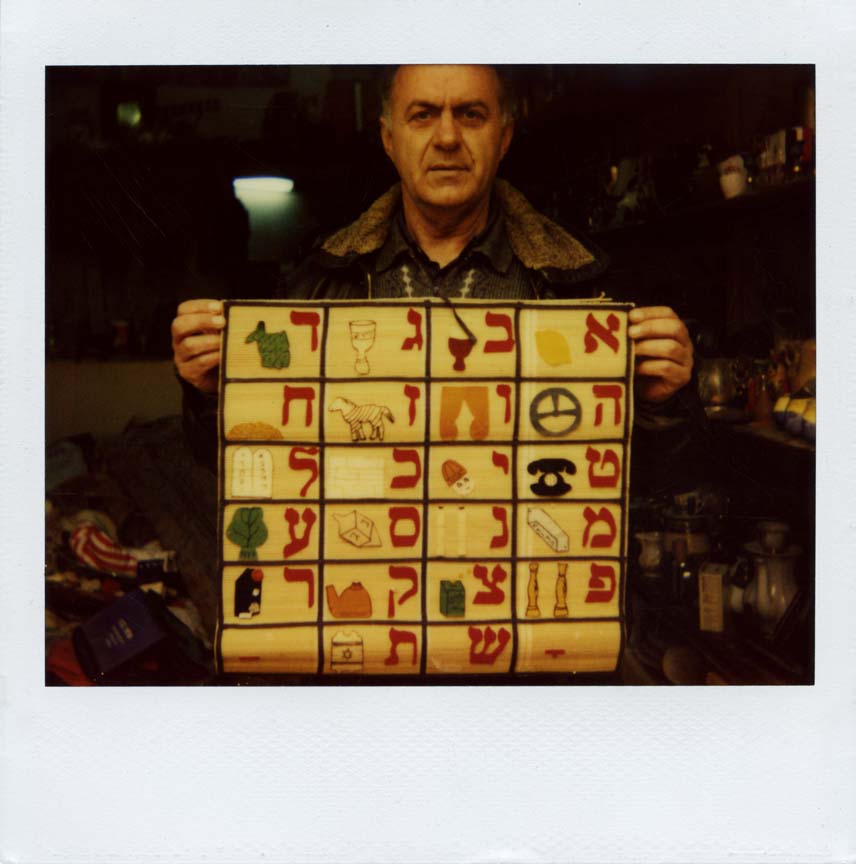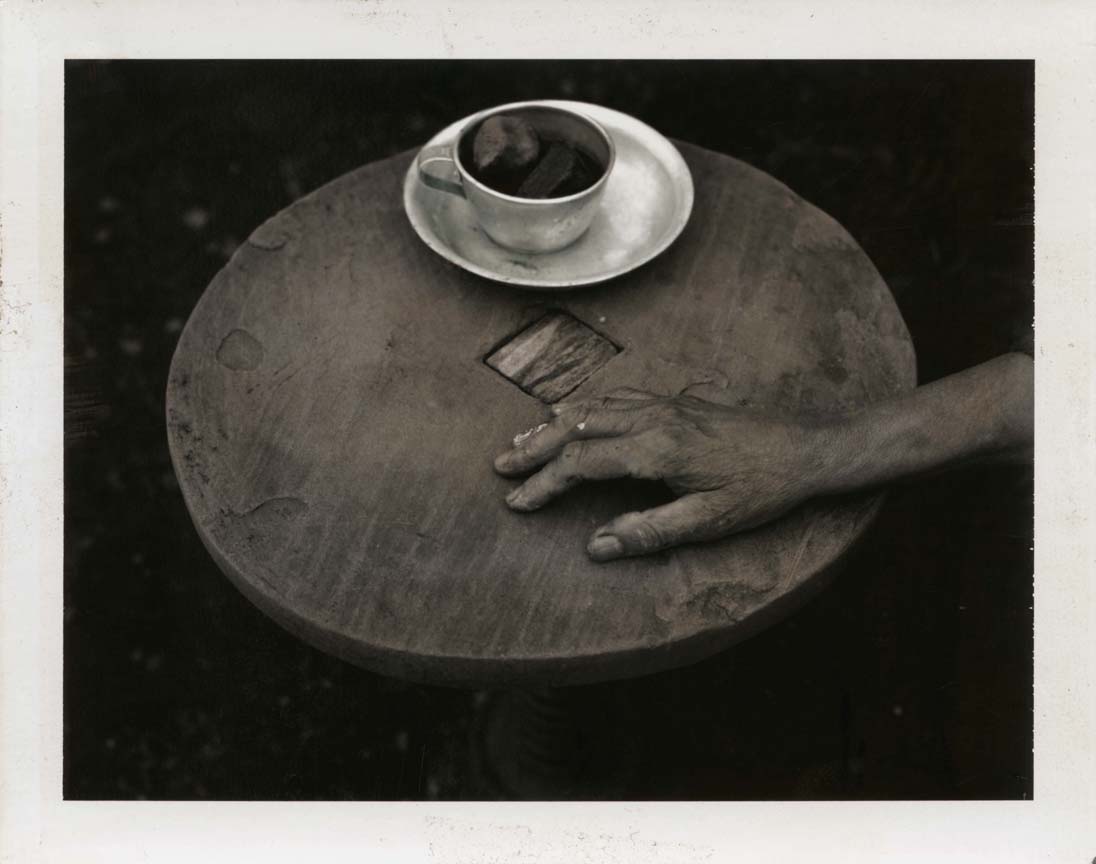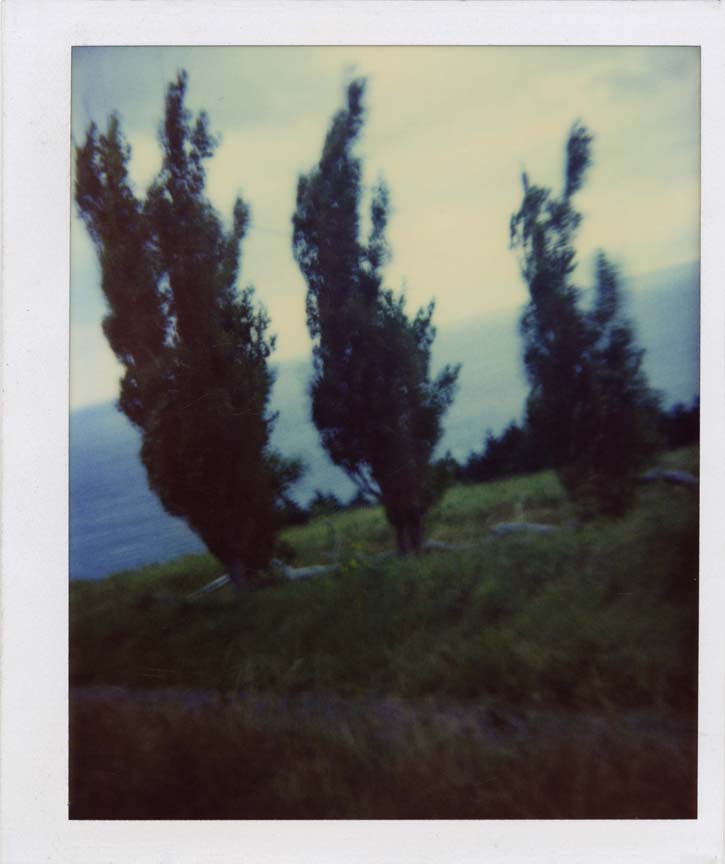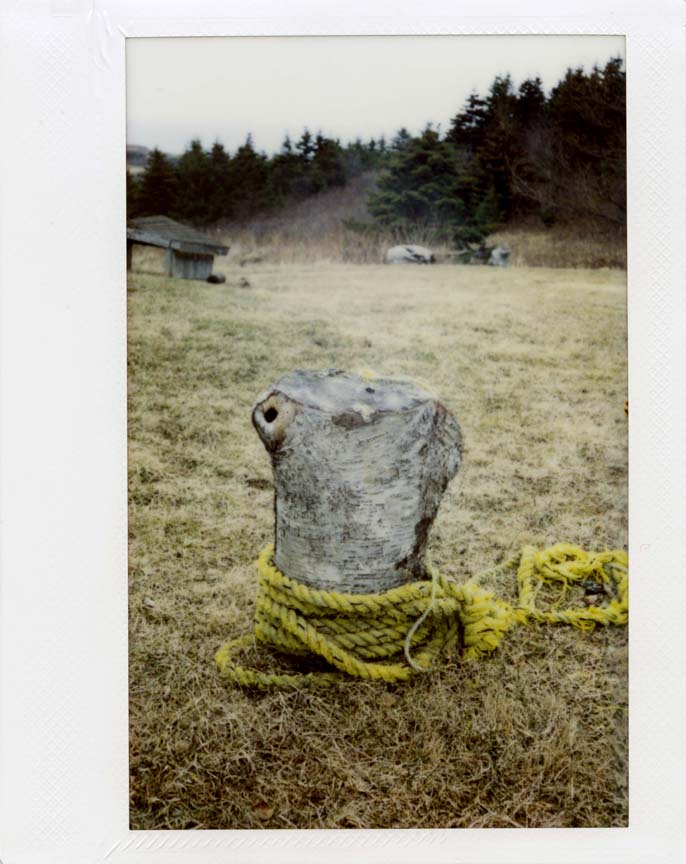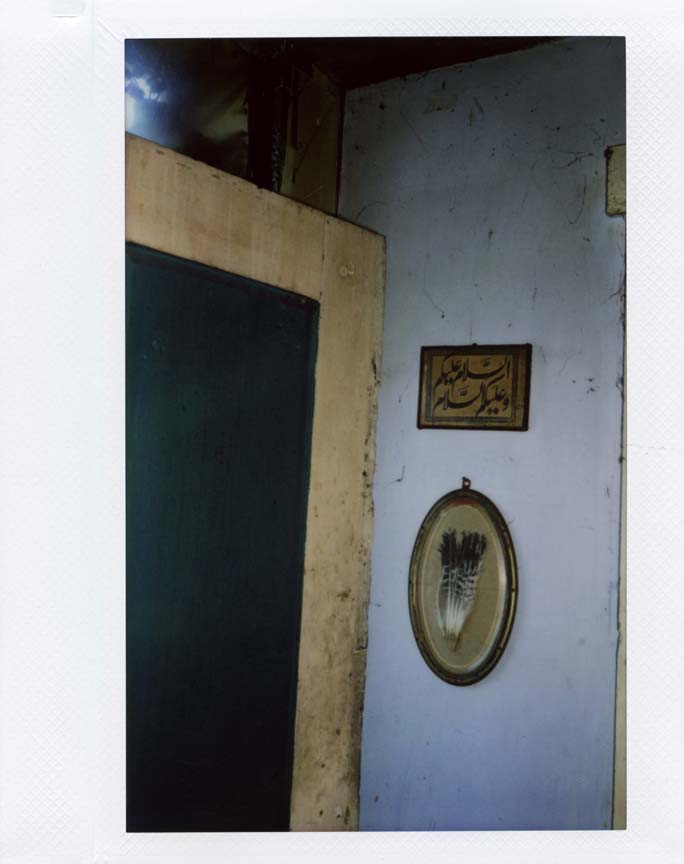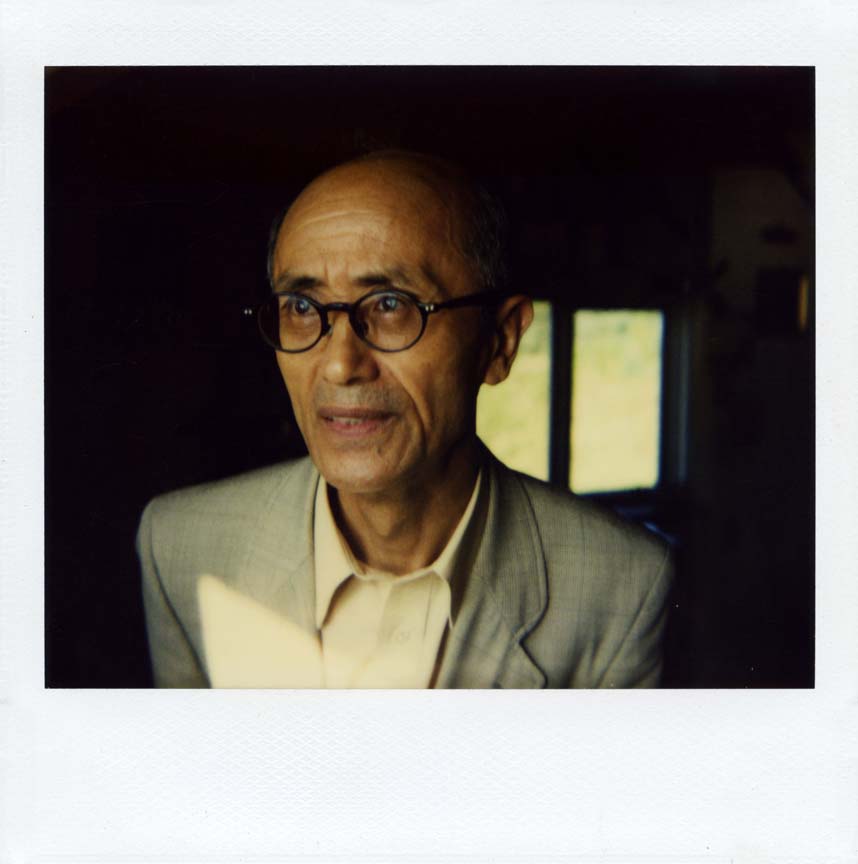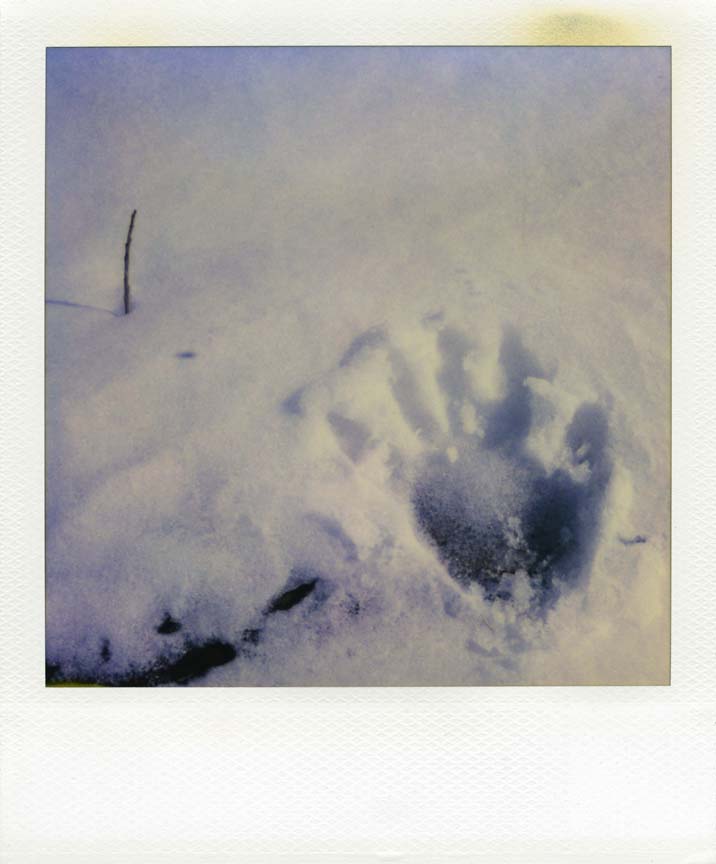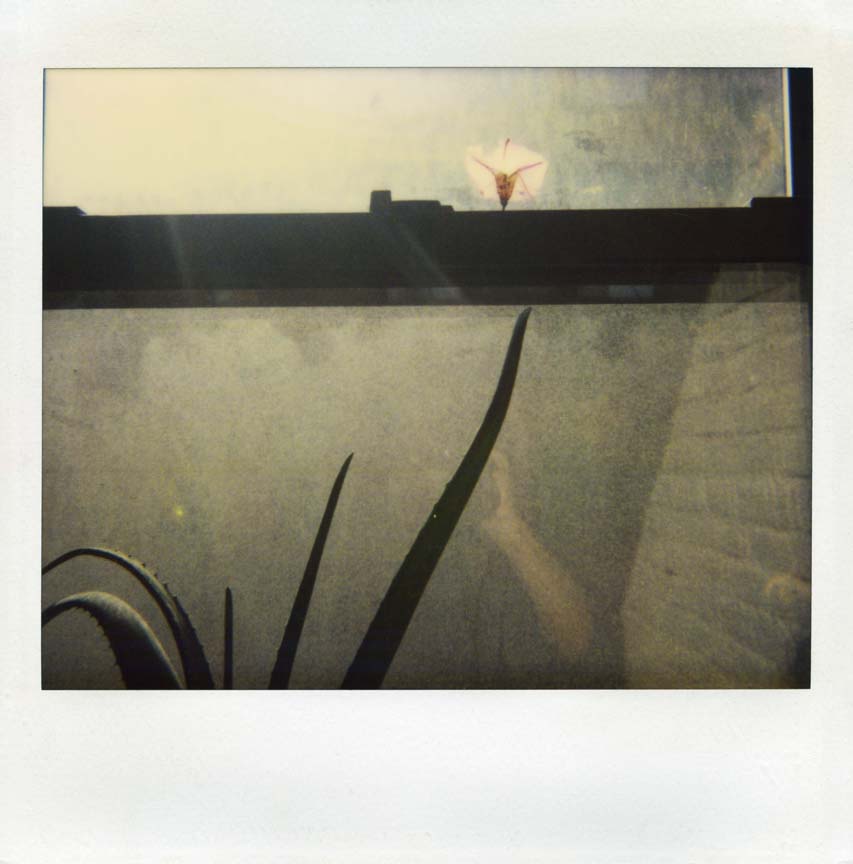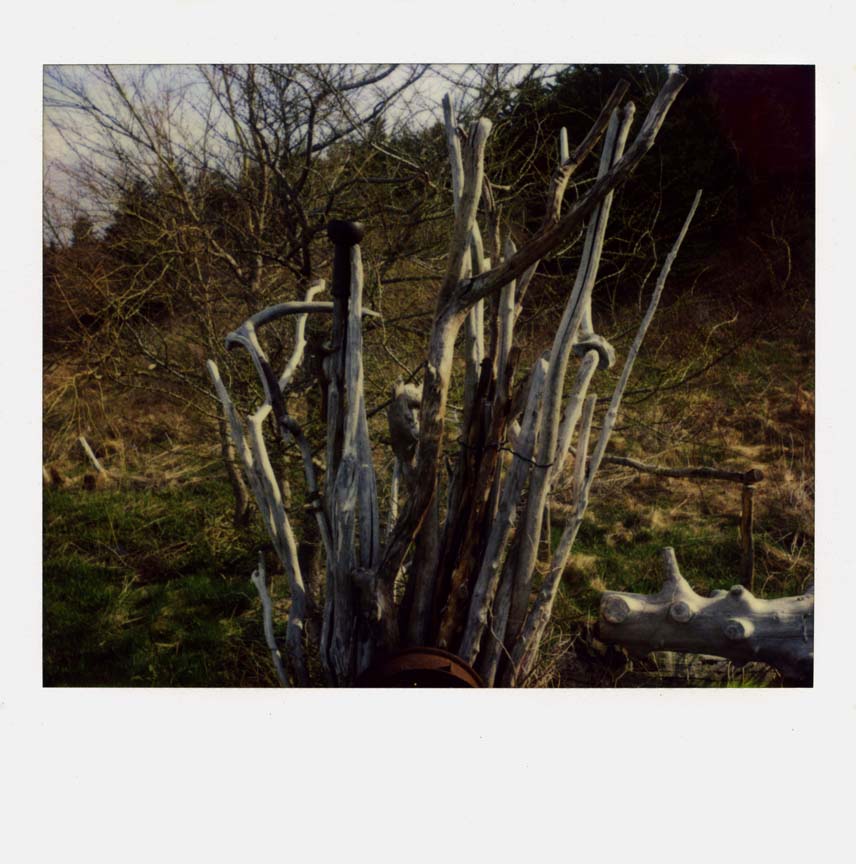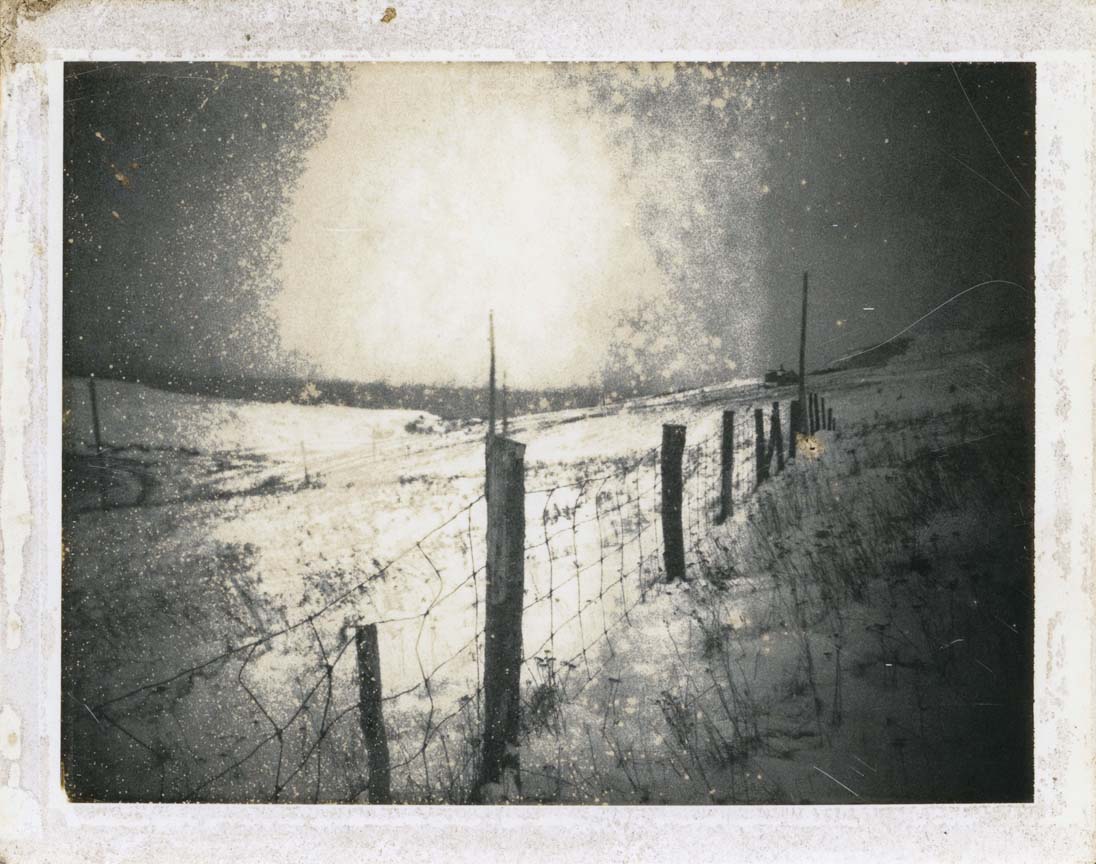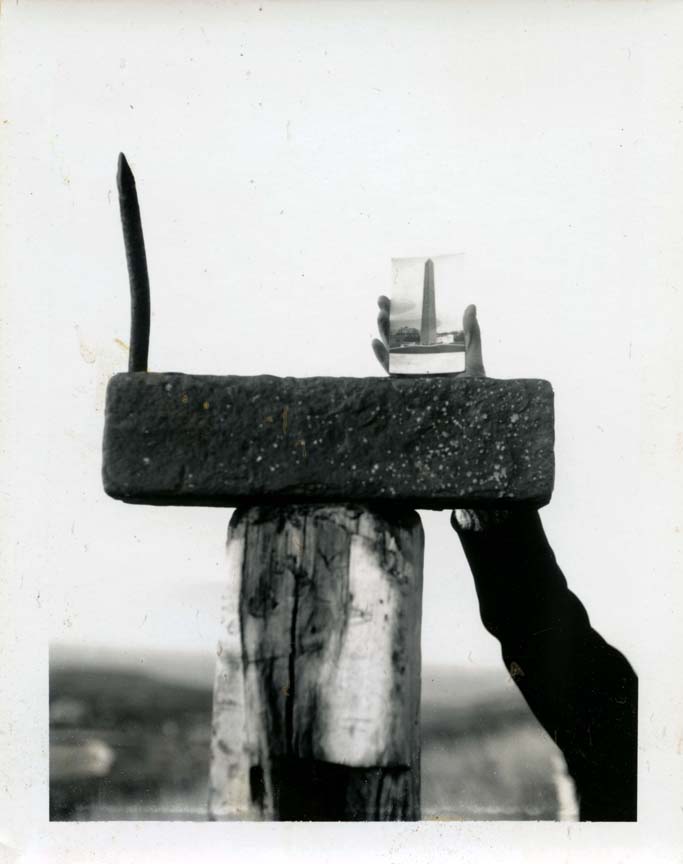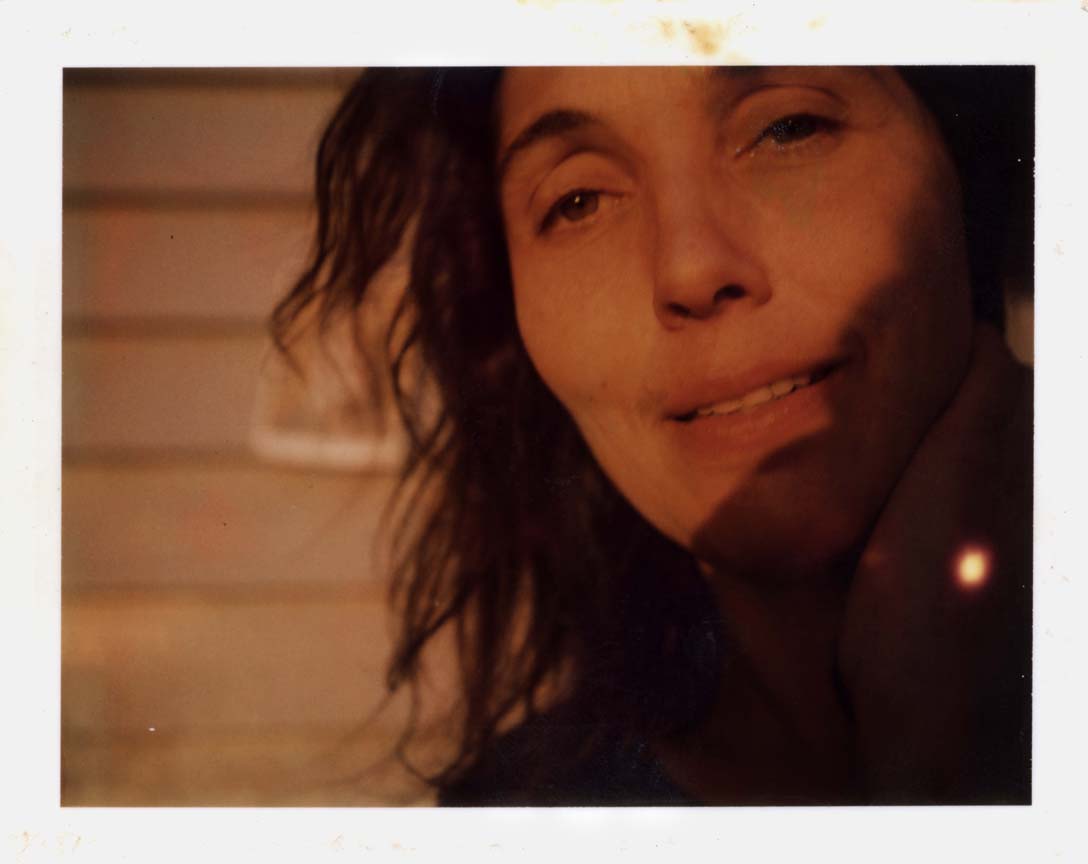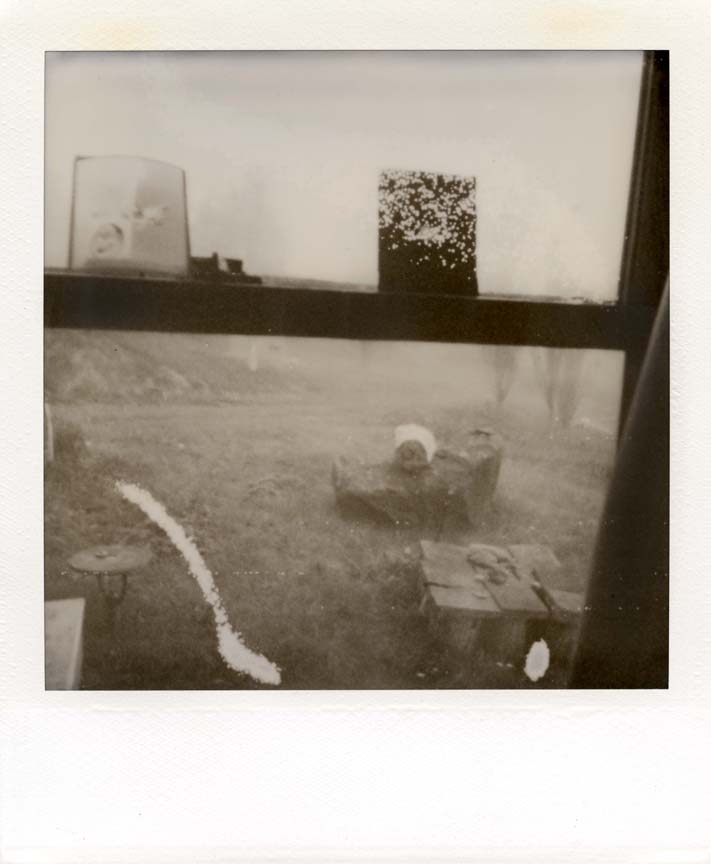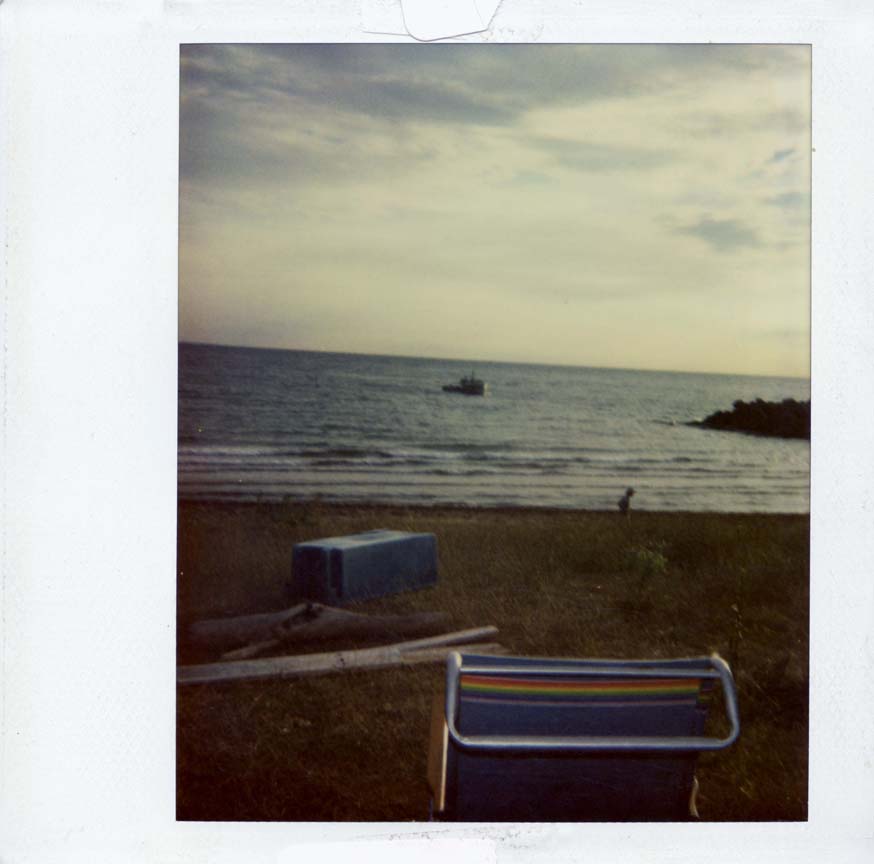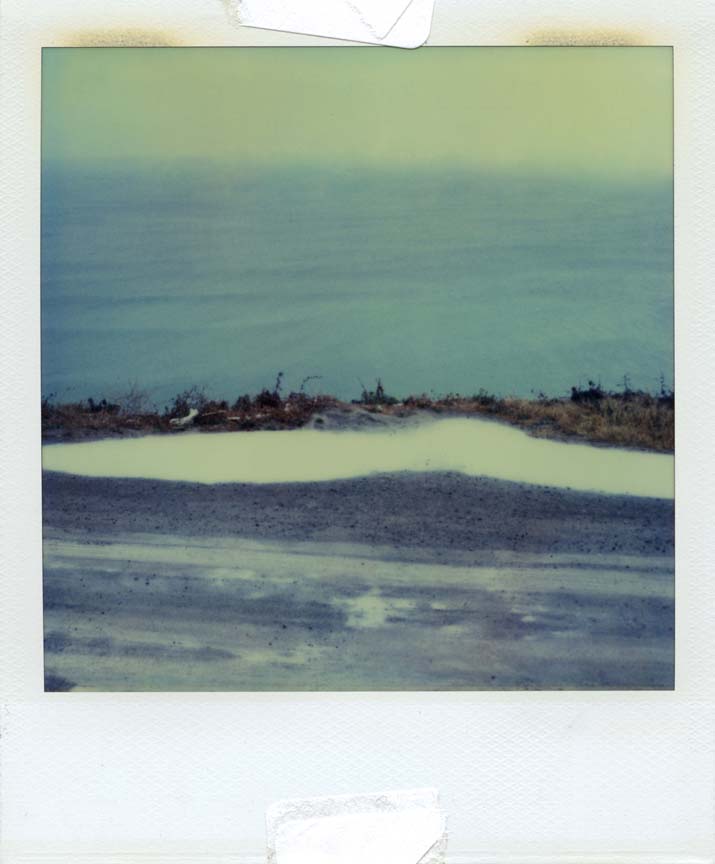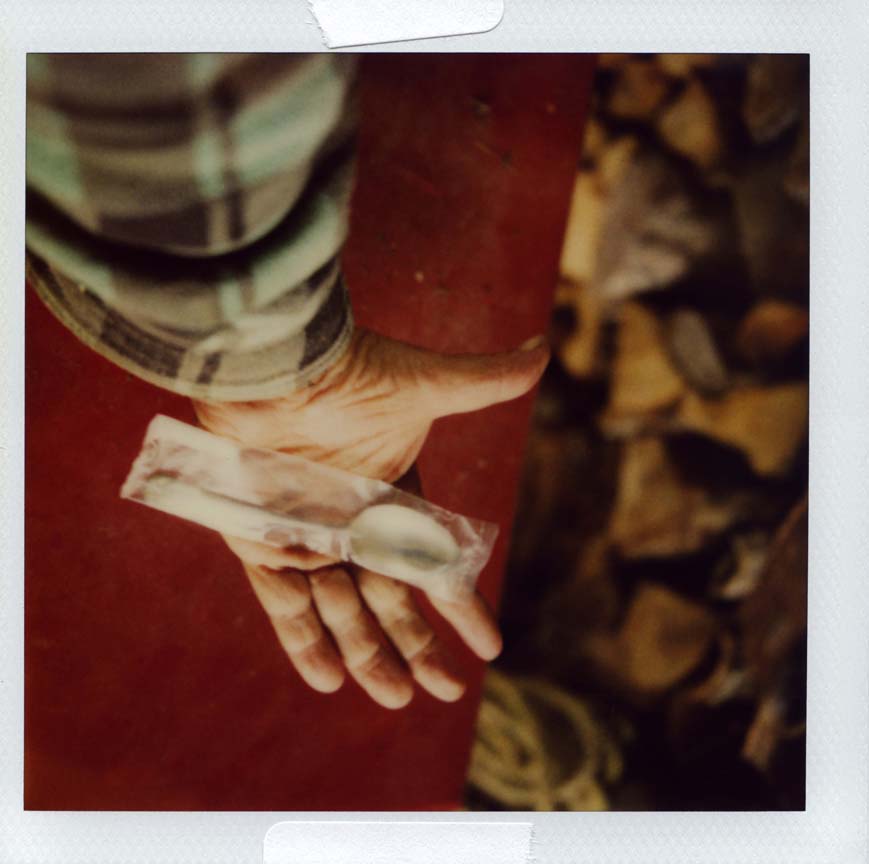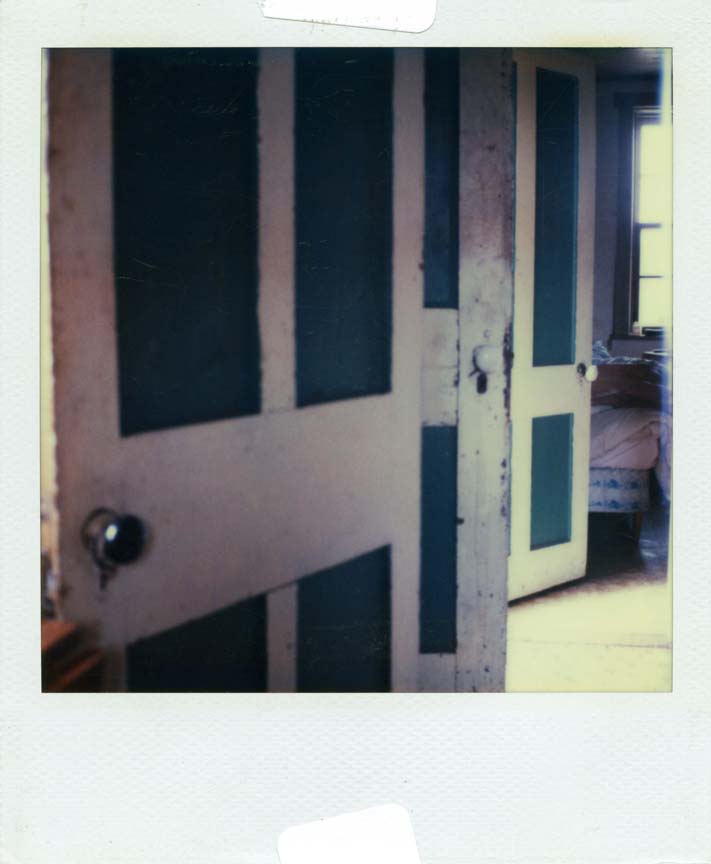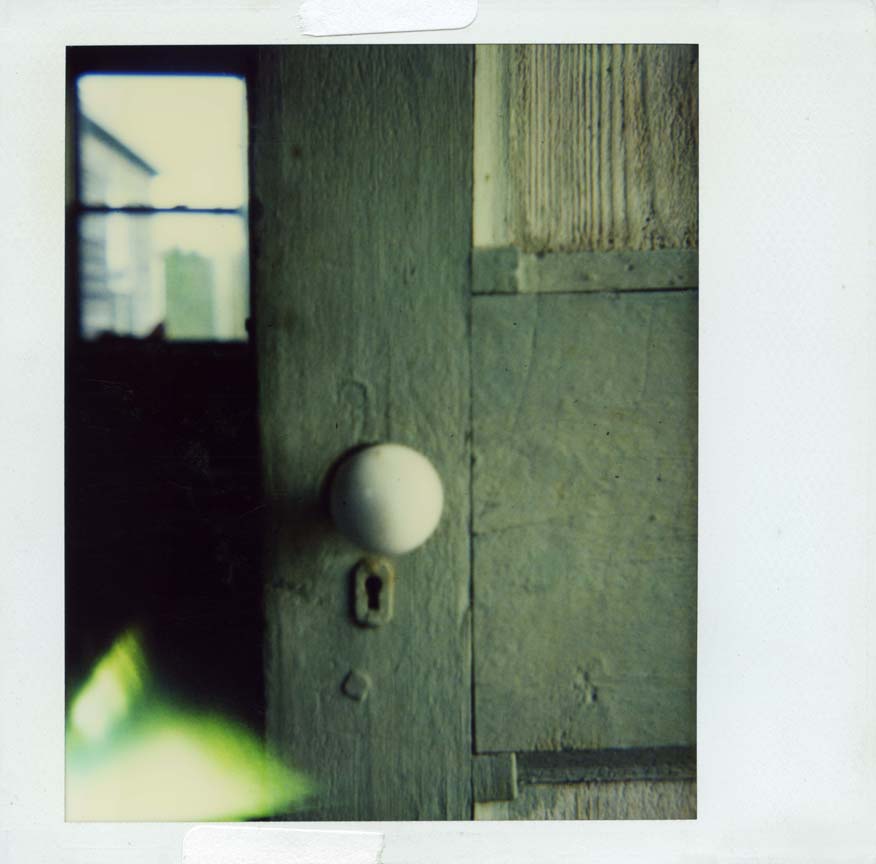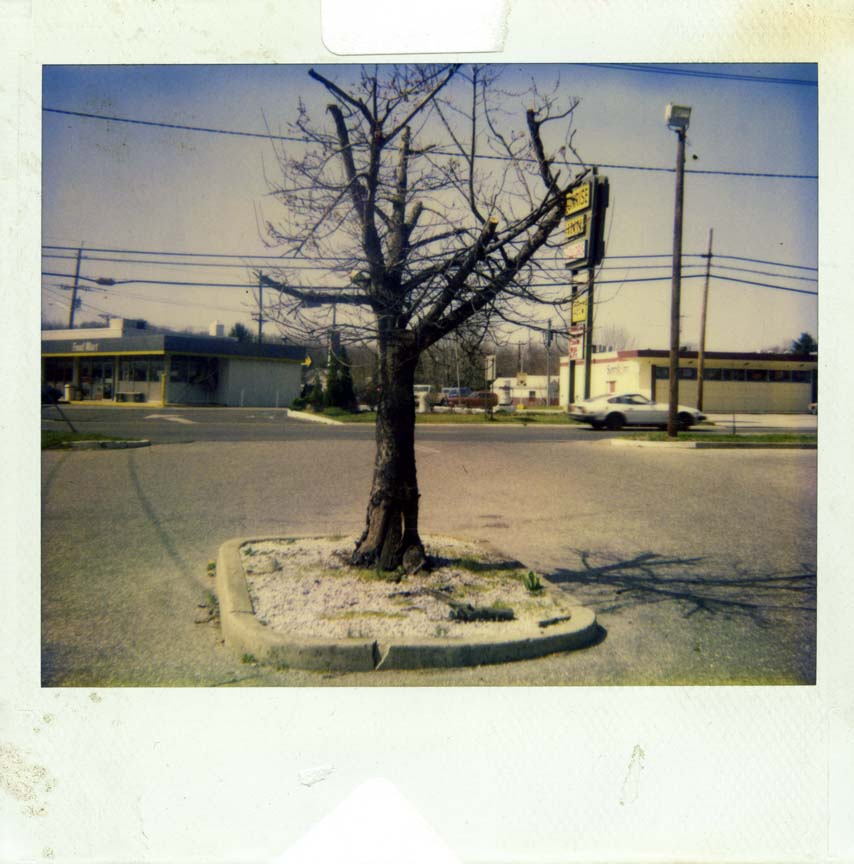Robert Frank
Painkiller
January 5 - 29, 2012
Painkiller is an original exhibition of 48 Polaroid images by groundbreaking photographer Robert Frank taken from the 1970s through the present. Blue Sky closely collaborated with Frank in selecting photographs to be reproduced in a special series of enlarged prints for this show. Considered one of the most influential figures in the history of photography, Frank has redefined the aesthetic of both the still and the moving image via his pictures and films. Blue Sky is proud to present Frank's work again in Portland, having first shown his photographs in 1981.
Robert Frank (b. 1924, Zurich) studied French for a year in 1940 at the Institut Jomini in Payerne, before beginning a series of apprenticeships and employment positions as a photographer's assistant in Switzerland (1941-44).
Soon after his emigration to New York in 1947, Alexey Brodovitch hired Frank as a fashion photographer for Harper's Bazaar. The position brought many occasions for travel, and Frank's impressions of the United States, in comparison to other places, impacted his work. After receiving his first Guggenheim Fellowship in 1955, Frank embarked on a two-year trip across America during which he took over 28,000 pictures. Eighty-three of those images were ultimately published in Frank's groundbreaking monograph The Americans. Frank's unorthodox cropping, lighting, and sense of focus attracted criticism. His work, however, was not without supporters. Beat writers Jack Kerouac and Allen Ginsberg felt a kinship with Frank and his interest in documenting the fabric of contemporary society. Eventually "The Americans" jettisoned Frank into a position of cultural prominence; he became the spokesperson for a generation of visual artists, musicians, and literary figures both in the United States and abroad.
In 1959 Frank began making films. They are characterized by an improvisational quality that belies their careful planning. His 1972 documentary of the Rolling Stones on tour is perhaps Frank's best-known film. When he returned to still photography, his work began to include autobiographical elements and a snapshot aesthetic. He also created narratives using text and multiple frames of images whose negatives he deliberately scratched and altered. In a career spanning over fifty years, Frank has inflected his perspective on our world-at-large to produce a body of work that defies easy classification beyond its singularly experimental nature.
Frank's photography and films have been the subject of exhibitions in the United States and abroad since Edward Steichen first included Frank's photographs in the 1950 group show "51 American Photographers" at the Museum of Modern Art, New York. Frank was given his first solo show, "Robert Frank: Photographer," by the Art Institute of Chicago in 1961, and the Museum of Modern Art again highlighted Frank's work in the 1962 exhibition "Photographs by Harry Callahan and Robert Frank." Zurich's Kunsthaus mounted the first retrospective of Frank's photographs in 1974, and others soon followed, including an exhibition organized by the National Film Board of Canada and shown in Ottawa before traveling to Harvard University's Fogg Art Museum, Cambridge, Mass. (1978); "Robert Frank: Photographer/Filmmaker, Works from 1945-1979," at the Long Beach Museum of Art in California (1979); and "The New American Filmmakers Series: Robert Frank," at the Whitney Museum of American Art, New York (1980).
Attention to Frank's filmmaking increased in the 1980s; in 1981 his films were screened at the prestigious Film Festival in Rotterdam. "Robert Frank: Fotografias/Films 1948-1984" was exhibited at the Sala Parpallo, Valencia, Spain, in 1985, and a year later the Museum of Fine Arts, Houston, organized "Robert Frank: New York to Nova Scotia," which traveled to the Museum Folkwang, Essen, Germany, in 1987. The American Film Institute in Washington, D.C., hosted the 1987 retrospective "In the Margins of Fiction: The Films of Robert Frank," and that same year "The Lines of My Hand" appeared at the Museum für Gestaltung, Zurich. In 1994 the National Gallery of Art, Washington, D.C., organized the exhibition "Robert Frank: Moving Out," which traveled to the Kunsthaus Zurich, the Stedelijk Museum in Amsterdam, the Whitney Museum of American Art in New York, and the Yokohama Museum of Art. In celebration of Frank's 1996 Hasselblad Foundation award, the exhibition "Flamingo" was shown a year later at the foundation's center in Göteborg, Sweden.
Interest in Frank's work continues to grow. Recent exhibitions include "Robert Frank: HOLD STILL - Keep Going" originating at the Museum Folkwang, Essen, and traveling to the Reina Sofía in Madrid and the Centro Cultural de Belém in Lisbon (2000-01) and "Robert Frank: London/Wales" at the Corcoran Gallery of Art, Washington, D.C. (2003). In 2004 the Tate Modern in London organized "Robert Frank: Storylines," showcasing over 150 of Frank's prints and a program highlighting many of his films and video projects. The retrospective traveled to the Museu d'Art Contemporani in Barcelona and both the Fotomuseum and Fotostiftung Schweiz in Winterthur, Switzerland (2005). Most recent exhibitions include "Robert Frank: Paris", which opened at the Museum Folkwang, Essen (April-July 2008), and traveled to the Museo di Fotografia Contemporanea, Milan (September-November 2008), the Jeu de Paume, Paris (January-March 2009), and the Nederlands Fotomuseum, Rotterdam (April-May 2009); "Looking In: Robert Frank's The Americans" which opened at the National Gallery of Art, Washington in January 2009 and traveled to the San Francisco Museum of Modern Art (May-August) and the Metropolitan Museum of Art, New York (September-December), and "Robert Frank," Pace/MacGill Gallery, New York, NY, October-December 2009.
Frank is the recipient of many honors, including two Guggenheim Fellowships, the first awarded to a European photographer (1955, 1956); an American Film Institute grant (1970-71); the Deutsche Gesellschaft für Photographie Erich Salomon Prize (1985); the Friends of Photography Peer Award for a Distinguished Career in Photography (1987); the Hasselblad Foundation International Award in Photography (1996); the International Center of Photography Cornell Capa Infinity Award (2000); an honorary Ph.D. from the University of Göteborg (1999); and the Edward MacDowell Medal (2002). His work can be found in collections worldwide, including the Art Institute of Chicago; the Corcoran Gallery of Art, Washington, D.C.; the Detroit Institute of Arts; Fotomuseum Winterthur, Switzerland; the George Eastman House, Rochester; Maison Européene de la Photographie, Paris; the Metropolitan Museum of Art, New York; the Museum Folkwang, Essen, Germany; the Museum of Modern Art, New York; the National Gallery of Art, Washington, D.C.; the National Gallery of Canada, Ottawa; the Philadelphia Museum of Art; the San Francisco Museum of Modern Art; Stiftung fur die Photographie, Kunsthaus, Zurich; the Tate Modern, London; the Victoria and Albert Museum, London; and the Whitney Museum of American Art, New York. In 1990 the National Gallery of Art in Washington, D.C., established the Robert Frank Collection.
Monographs of Frank's work include The Americans (1958, 1959); New York to Nova Scotia (1986);Lines of My Hand (1989); Black White and Things (1993); Moving Out (1994); Thank You (1996);Flamingo (1996); HOLD STILL . . . Keep Going (2001); Frank Films: the film and video work of robert frank (2003); London/Wales (2003); and Storylines (2004). His films include Pull My Daisy(1959); The Sin of Jesus (1961); OK End Here (1963); Chappaqua (1964-66); Me and My Brother(1965-68); Conversations in Vermont (1969); Liferaft Earth (1969); About Me: A Musical (1971);Cocksucker Blues (1972); Keep Busy (1975); Life Dances On . . . (1980); Energy and How to Get It(1981); This Song for Jack (1983); Home Improvements (1985); Candy Mountain (1987); Hunter(1989); One Hour (1990); Last Supper (1992); Moving Pictures (1994); Flamingo (1997); The Present (1998); I Remember (1998); Sanyu (1999); Paper Route (2002); and True Story (2004).
Frank lives and works in New York City and Nova Scotia.

